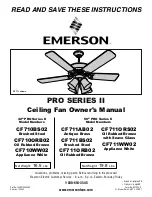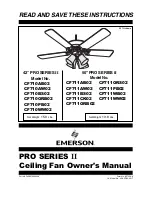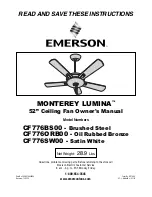
www.DaikinApplied.com 41
IM 830-6
Split Systems Guidelines
The following provides basic guidelines that will provide proper
system cooling and operation of an R-410A commercial DX/hot
water system for school applications. DX system components
must be matched and sized correctly (not oversized) for the load.
The DX system
must
incorporate the following, provided by
others, for proper operation:
•
Size piping per ASHRAE Refrigeration Handbook (correct
refrigerant and compressor oil flow), see
•
Use clean sealed refrigerant grade piping (prevent system
contamination)
•
Install Liquid Line Filter Dryer (clean/dry system to prevent
damage of operating components), see
.
•
Install Liquid Line Sight Glass (indicates refrigerant
dryness and if liquid in liquid line - do not use the sight
glass to determine when refrigerant system is charged
.
•
Install pressure taps on the unit ventilator's liquid line and
suction lines for subcooling and superheat measurements
at the unit ventilator, see
•
Install High Pressure Switch at condensing unit wired
in condenser control system (protects compressor and
refrigerant system from excessive pressures - condenser
fan failure or overcharging), see
.
•
Install Low Pressure Switch at condensing unit wired in
the condenser control system (low refrigerant pressure
switch protects the system under low refrigerant suction
conditions), see
.
•
Install Low Ambient Temperature Switch at condensing
unit wired in the condenser control system (locks out
mechanical cooling below 60°F - proper system operation
and free economizer usage), see
Figure 75: Typical Piping and Wiring for Split System
•
Incorporate Compressor Time Delay (5 minute) in
condensing unit control system (reduces excessive
compressor cycling), see
•
Single phase compressors - consider hard start kits to
overcome non-equalized pressure in refrigerant lines.
•
Incorporate Low Refrigerant Temperature Sensor (T4) in
condensing unit control system (T4 protects the system
under low refrigerant suction conditions) see
.
•
UV fans must continue to run upon Low Refrigerant
Temperature trip of T4 (controls by others) or ICT
(MicroTech) (evaporator air flow dissipates residual low
coil surface temperatures - suction pressures raised, coil
frosting reduced), see
.
•
UV fans must continue to run for set time period during
unoccupied mode after satisfaction of the space
sensor (dissipates residual low evaporator coil surface
temperatures - reducing coil frosting).
•
Lock the Face and Bypass Damper (actuator spring return
to full face when de-energized) in the full face position during
mechanical cooling (full air through evaporator coil reduces
low refrigerant suction conditions, potential coil frosting)
•
When Brazing bleed Nitrogen through piping (reduced
oxides and blockage in piping/TXV)
•
Use Heat Sink when brazing to prevent overheating the
TXV valve body and bulb (avoid valve damage and erratic
operation).
•
Verify the TXV bulb securely attached at 2 or 10 o’clock
for 7/8" and smaller diameter suction line piping (proper
suction gas sensing and reduced hunting) See
.
•
Insulate the TXV bulb (reacts to refrigerant temperatures
and not ambient), see
.
•
Insulate the suction line piping (minimum heat pickup), see
.
•
Evacuate and properly charge the refrigerant system, see
•
Charge to subcooling at the condensing unit per the
condensing unit manufacturer’s instructions, typically 15°F
to 16°F at the unit ventilator, subcooling at 95°F outdoor
ambient (results in correct refrigerant distribution at the coil
to prevent low suction temperatures)
•
Adjust TXV for correct superheat to eliminate/minimize
hunting, see
.
•
Set superheat to 5°F to 7°F at the UV coil suction line when
95°F outdoor ambient (proper system superheat for optimum
performance). Allow system to settle for 20 to 30 minutes to
reach stable steady state conditions and then recheck/adjust
superheat if necessary, see
•
Compensate both subcooling and superheat for actual
outdoor ambient and indoor air temperatures
•
In windy areas, add wind baffles to condensing unit or
build a parapet (eliminate wind effect on condensing unit
coil for proper TXV refrigerant flow at lower ambient)
•
For lower ambient conditions install variable speed
condenser fan head pressure control to maintain head
pressures between 180psig and 280psig (for proper TXV
refrigerant flow at lower ambient).
















































